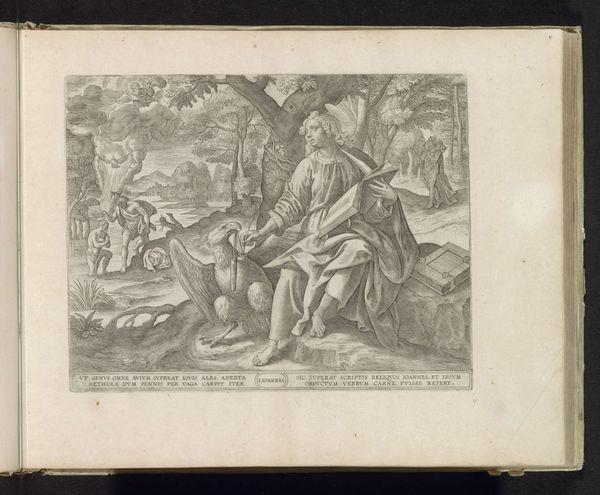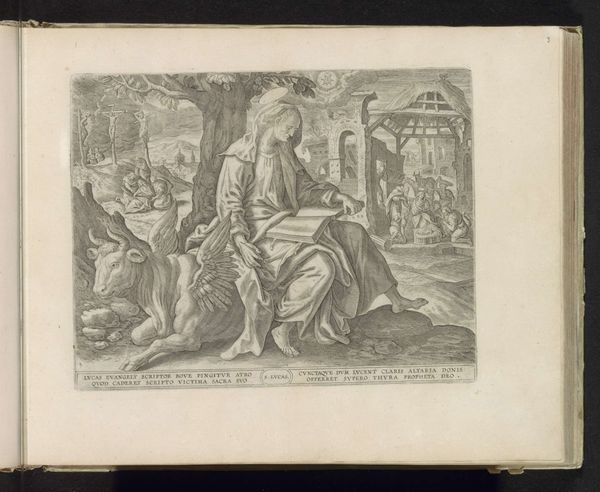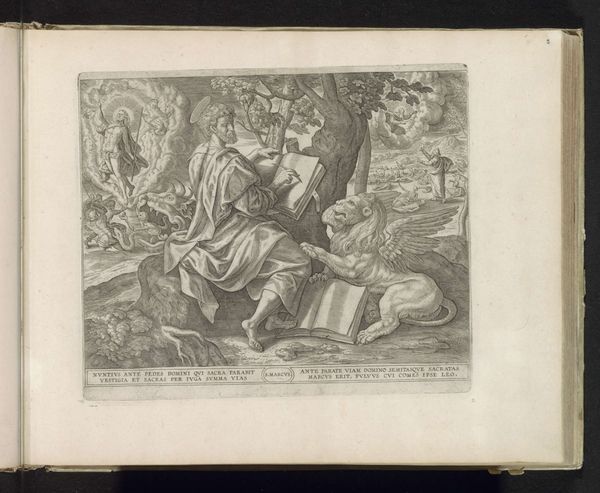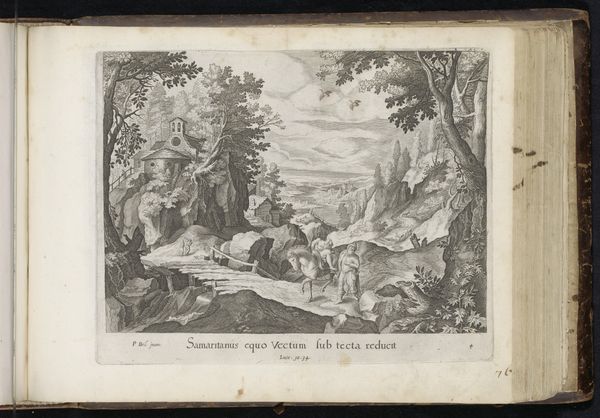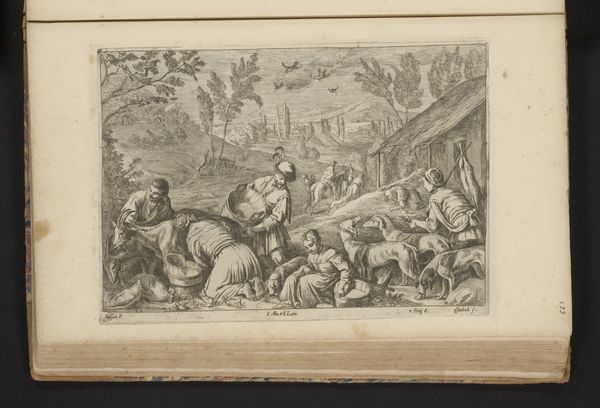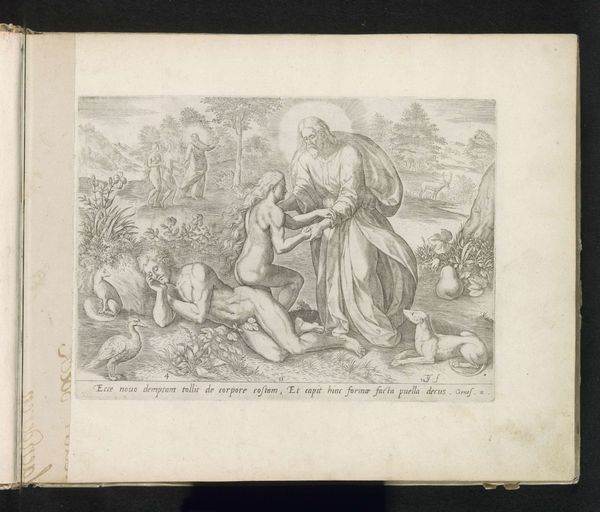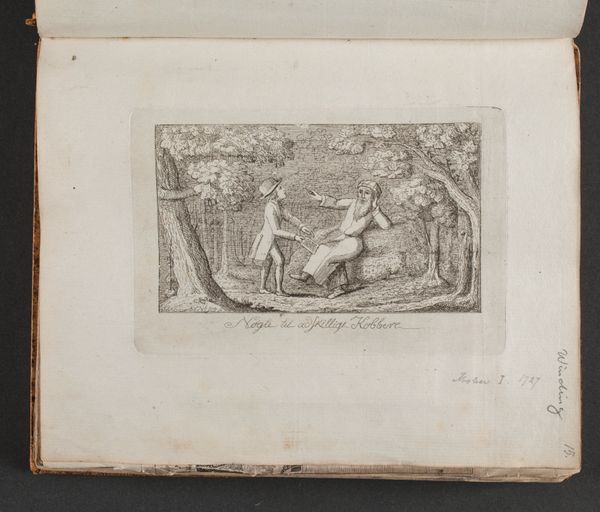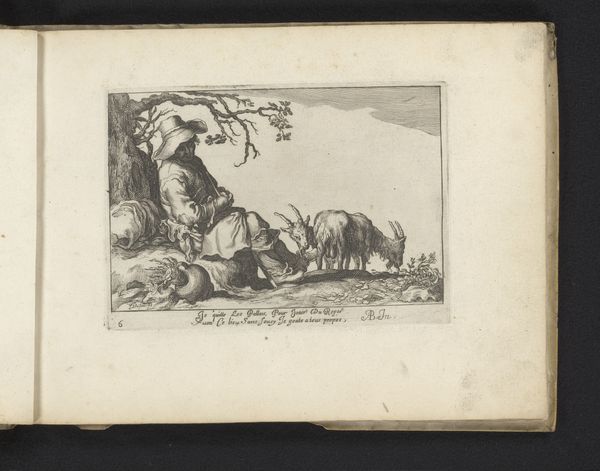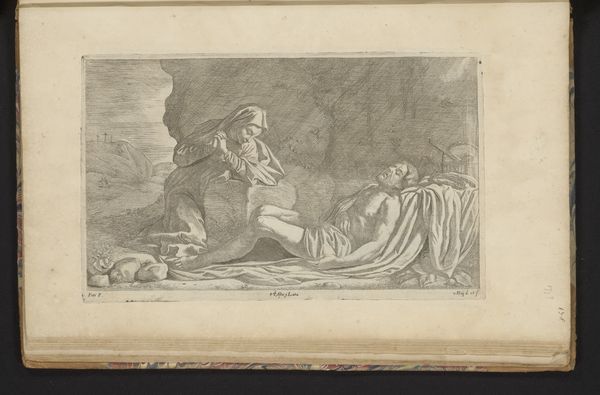
print, engraving
#
narrative-art
# print
#
mannerism
#
figuration
#
line
#
history-painting
#
engraving
Dimensions: height 220 mm, width 286 mm
Copyright: Rijks Museum: Open Domain
Curator: Here, from the Rijksmuseum collection, we have Philips Galle’s engraving, "Lot and his Daughters," likely created sometime between 1571 and 1579. Editor: The swirling lines immediately suggest chaos, but contained, almost domestic, like a nightmare acted out within the confines of a home. There’s something unsettling about the intertwined figures. Curator: Absolutely. The scene depicts a particularly fraught moment from the Book of Genesis. We see Lot, intoxicated, embraced by his daughters, following their escape from the destruction of Sodom. The story speaks to the breakdown of societal norms, the loss of innocence, and the desperation of survival. Editor: Galle’s use of Mannerist style amplifies those tensions. The exaggerated musculature, the stylized poses – even the trees seem to writhe with unease. The landscape behind them reveals the burning city. Everything is off-kilter and emotionally charged. How does Galle’s presentation shape the perception of these figures in a Mannerist work, versus a Renaissance interpretation? Curator: The choice is interesting and it might well highlight the anxieties of the period during the reformation wars and deep socio-economic changes, and the engraving is loaded with iconographic symbolism. Consider the wine, an obvious symbol of the Eucharist corrupted into drunken indiscretion. Then you have the cave as refuge or grave; or maybe the twisted tree that can represent the natural, wild order. These resonate profoundly, revealing a culture grappling with religious and moral upheaval and the precarious nature of moral and societal continuity. Editor: I wonder, what impact did these moralizing prints have on public discourse during that era, especially for those beyond elite art circles? Was there widespread condemnation or a more nuanced reception, especially considering the socio-political role of art at the time? Curator: Such prints would be disseminated through multiple social and economical strata through cheap pamphlets, with woodcuts, enabling widespread awareness of bible stories to the illiterate. They reinforced doctrine in an easily readable format and likely did sway moral codes. Editor: So much compressed into one sheet of paper... a potent mix of religious drama, societal anxieties, and artistic flourish. It really makes you ponder the complexities of faith, family, and survival during such a turbulent era. Curator: It leaves us with questions that stretch far beyond the boundaries of the engraving itself and resonate in society as a whole.
Comments
No comments
Be the first to comment and join the conversation on the ultimate creative platform.
